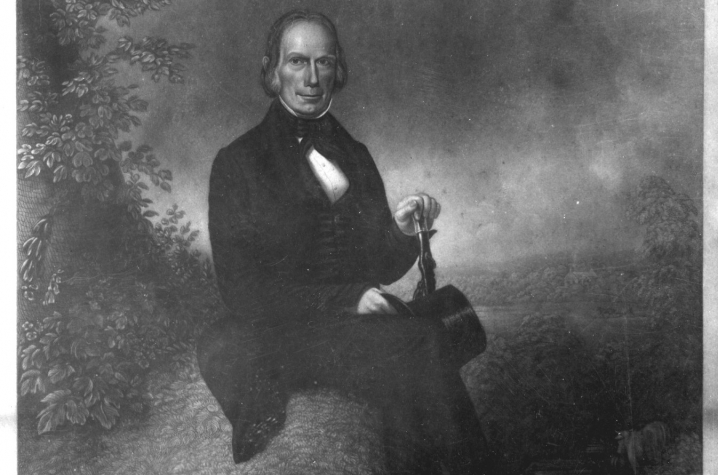Henry Clay Estate Marks its Connection to UK
LEXINGTON, Ky. (Aug. 24, 2015) — As the University of Kentucky continues its celebration of its sesquicentennial, Ashland, the Henry Clay Estate, will commemorate its connection to the institution's origin. The estate will dedicate a historic marker on its property detailing its part in the university's 150-year history at 1:30 p.m. Tuesday, Aug. 25. The event is free and open to the public.
In 1804, Henry Clay began to acquire land for a farm for his young family. By 1809, the center block of his new home was complete and Clay was residing on the farm he named Ashland for the ash trees abundant on the property. By 1811, he desired still more room and received plans to add wings to Ashland from Benjamin Latrobe, architect of the U.S. Capitol. Within a year or so, the home was a full five-part Federal structure including a center block, two hyphens (connecting pieces), and two end blocks. Clay and his wife, Lucretia Hart, resided at the home until his death in 1852.
The residence stayed in the Clay family's hands through the Civil War when hardship forced the family to sell the property in 1866 to farmer and lawyer John Bryan Bowman to become part of Kentucky University. Ashland housed the Agricultural and Mechanical College, the mechanical campus, of Kentucky University.
Bowman moved to Ashland in 1866 and initially used the home as a residence, but after a time, determined it had more room than he needed. As a result, selected rooms on the first floor were designated for the university’s use as a museum. Unfortunately, by the late 1870s Bowman’s relationship with the university’s board of directors had begun to deteriorate and he was fired. He was forced to leave Ashland in 1878. The same year the Agricultural and Mechanical College split from Kentucky University and moved to UK's current location.
While still owned by Kentucky University, Ashland was rented out until 1882 when it was sold to Henry Clay’s granddaughter, Anne Clay McDowell, and her husband Henry Clay McDowell, who had been named in honor of her famous grandfather. The McDowells returned Ashland to family ownership for the first time in 16 years. The couple's oldest child, Nannette McDowell Bullock, her husband Thomas, and son Henry were the last residents of Ashland, and it is through Nannette’s efforts that the Henry Clay Memorial Foundation was created, preserving Henry Clay’s legacy, the house and 17 remaining acres for future generations.
In addition to the new marker, the estate currently has an exhibition on display focusing on the site's connection to the institutions that would eventually become UK. "To Educate the Masses: The Kentucky University and Agricultural and Mechanical College at Ashland," which opened March 17, explores this pivotal period in Ashland’s history, a period that resulted in the saving of Lexington’s oldest institution of higher education and the Ashland estate itself as well as the birth of our state’s flagship university. The exhibition runs through Dec. 31.
MEDIA CONTACT: Whitney Hale, 859-257-8716; whitney.hale@uky.edu







